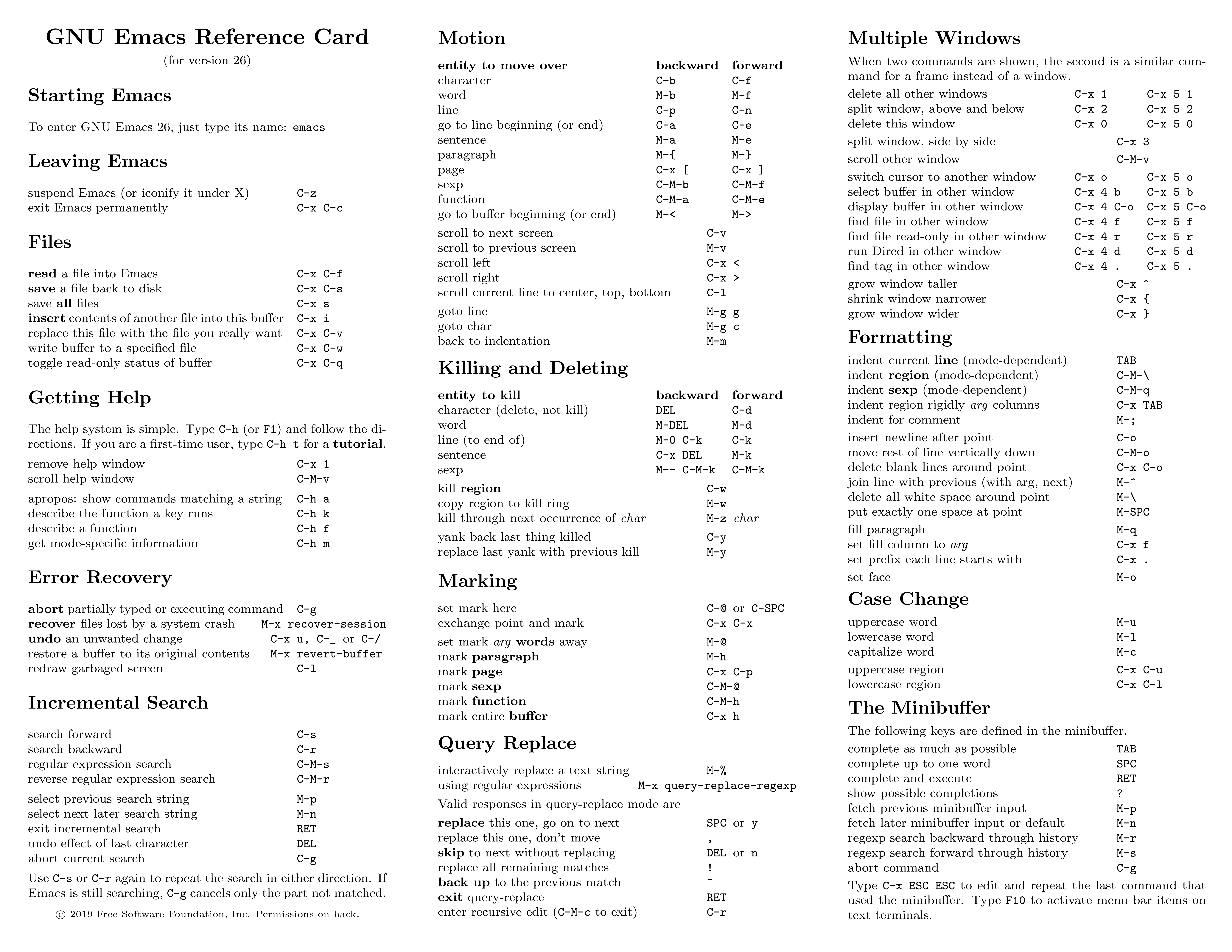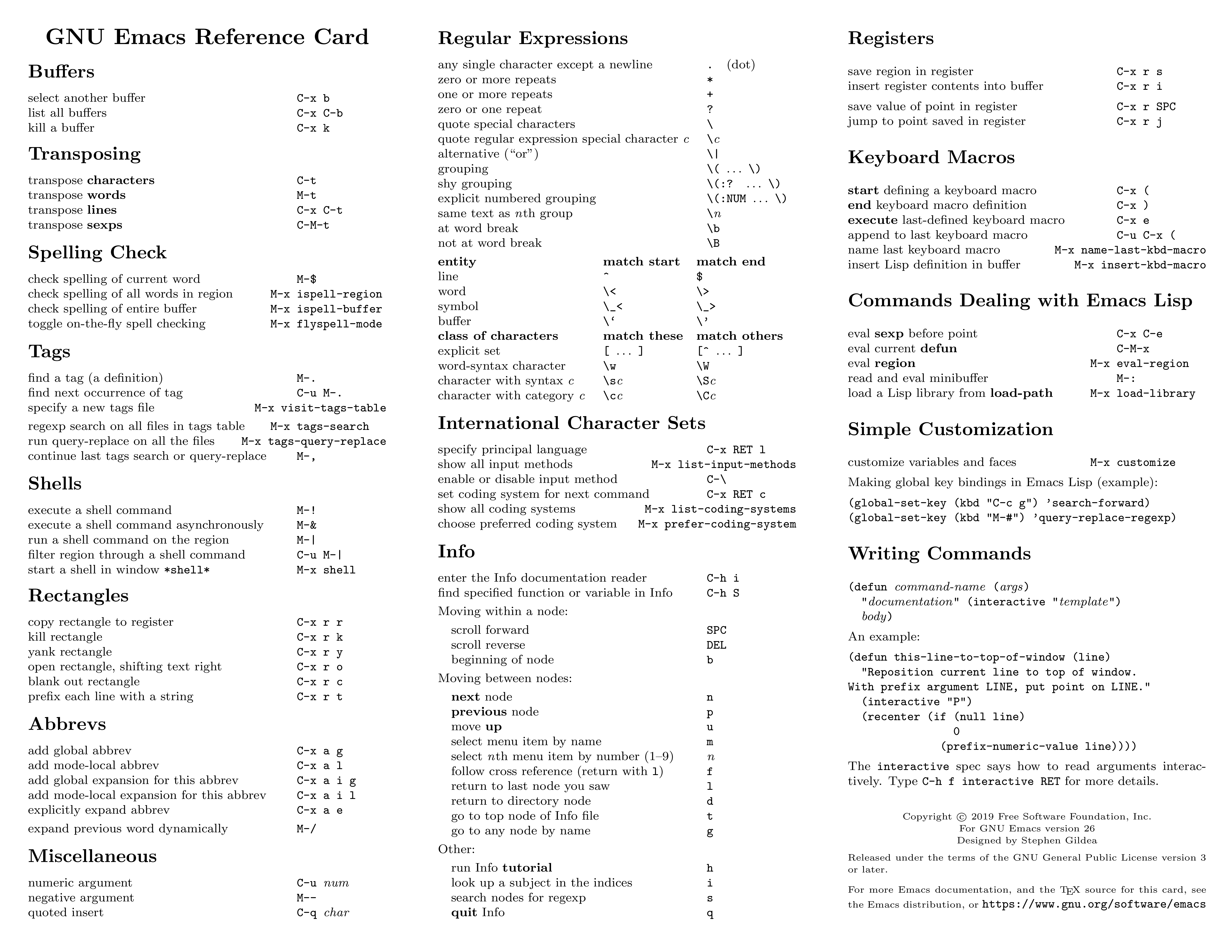Text editors in Linux
Overview
Teaching: 60 min
Exercises: 30 minQuestions
How to write and edit text files in the terminal
Objectives
Learn the basic commands to use nano, emacs and vim
Terminal-based Text Editors
There are several terminal-based editors available on our clusters. We will focus our attention on three of them: nano, emacs, and vim. Your choice of an editor depends mostly on how much functionality do you want from your editor, how many fingers do you want to use for a given command and the learning curve to master it. For HPC users the editor is an important choice. Most of your time you are on the terminal executing commands or editing files, being those input files, submission scripts or the output of your calculations.
Let's review those three editors to give you the opportunity to have an informed choice.
Nano
Nano is a small, free and friendly editor with commands that usually manage using the Control (CTRL) combined with some other key.
You can start editing a file using a command line like this
$> nano myfile.f90
There are several commands available, the list below comes from the help text. When you see the symbol "\^" it means to press the Control (CTRL) key, the symbol "M-" is called Meta, but in most keyboards is identified with the (Alt) key.
^G (F1) Display this help text
^X (F2) Close the current file buffer / Exit from nano
^O (F3) Write the current file to disk
^J (F4) Justify the current paragraph
^R (F5) Insert another file into the current one
^W (F6) Search for a string or a regular expression
^Y (F7) Move to the previous screen
^V (F8) Move to the next screen
^K (F9) Cut the current line and store it in the cutbuffer
^U (F10) Uncut from the cutbuffer into the current line
^C (F11) Display the position of the cursor
^T (F12) Invoke the spell checker, if available
^_ (F13) (M-G) Go to line and column number
^\ (F14) (M-R) Replace a string or a regular expression
^^ (F15) (M-A) Mark text at the cursor position
(F16) (M-W) Repeat last search
M-^ (M-6) Copy the current line and store it in the cutbuffer
M-} Indent the current line
M-{ Unindent the current line
^F Move forward one character
^B Move back one character
^Space Move forward one word
M-Space Move back one word
^P Move to the previous line
^N Move to the next line
The most basic usage is to edit a file, and exit from the editor with CTRL-X. Nano ask you if you want to save the file, you answer "Y" and offers you a name. Simply press ENTER and your file is saved.
Emacs
Emacs is an extensible, customizable, open-source text editor. Together with Vi/Vim is one the most widely used editors in Linux environments. There are a big number of commands, customization and extra modules that can be integrated with Emacs. We will just go briefly covering the basics.
The number of commands for Emacs is large, here the basic list of commands for editing, moving and searching text.
The best way of learning is keeping at hand a sheet of paper with the commands For example GNU Emacs Reference Card can show you most commands that you need.
Below you can see the same 2 page Reference Card as individual images.
Vi/Vim
The third editor widely supported on Linux systems is "vi". Over the years since its creation, vi became the *de-facto* standard Unix editor. The Single UNIX Specification specifies vi, so every conforming system must have it.
vi is a modal editor: it operates in either insert mode (where typed text becomes part of the document) or normal mode (where keystrokes are interpreted as commands that control the edit session). For example, typing i while in normal mode switches the editor to insert mode, but typing i again at this point places an "i" character in the document. From insert mode, pressing ESC switches the editor back to normal mode.
Vim is an improved version of the original vi, it offers
Here is a summary of the main commands used on vi. On Spruce when using "vi" you are actually using "vim".
This is very beautiful Reference Card for vim
This card was originally from this website Vim CheatSheet. The figure is very nice. However, we are not endorsing its usage by any means and I do not know about the legitimacy of the website.
Exercise
Select the editor that you know the less. The challenge is write this code in a file called Sierpinski.c
#include <stdio.h>
#define SIZE (1 << 5)
int main()
{
int x, y, i;
for (y = SIZE - 1; y >= 0; y--, putchar('\n')) {
for (i = 0; i < y; i++) putchar(' ');
for (x = 0; x + y < SIZE; x++)
printf((x & y) ? " " : "* ");
}
return 0;
}
Here is the challenge. You cannot use the arrow keys. Not a single time! It is pretty hard if you are not used to, but it is a good exercise to force you to learn the commands.
Another interesting challenge is to write the line for (y = SIZE - 1; y >= 0; y--, putchar('\n')) and copy and paste it to form the other 2 for loops in the code, and editing only after being copied.
Once you have succeed writing the source you can see your hard work in action.
On the terminal screen execute this:
$> gcc Sierpinski.c -o Sierpinski
This will compile your source code Sierpinski.c in C into a binary executable called Sierpinski. Execute the code with:
$> ./Sierpinski
The resulting output is kind of a surprise so I will not post it here. The original code comes from rosettacode.org
Why vi was programmed to not use the arrow keys?
From Wikipedia with a anecdotal story from The register
Joy used a Lear Siegler ADM-3A terminal. On this terminal, the Escape key was at the location now occupied by the Tab key on the widely used IBM PC keyboard (on the left side of the alphabetic part of the keyboard, one row above the middle row). This made it a convenient choice for switching vi modes. Also, the keys h,j,k,l served double duty as cursor movement keys and were inscribed with arrows, which is why vi uses them in that way. The ADM-3A had no other cursor keys. Joy explained that the terse, single character commands and the ability to type ahead of the display were a result of the slow 300 baud modem he used when developing the software and that he wanted to be productive when the screen was painting slower than he could think.
Key Points
Learn the basic commands to use nano, emacs and vim



